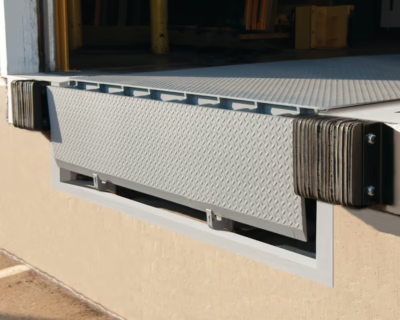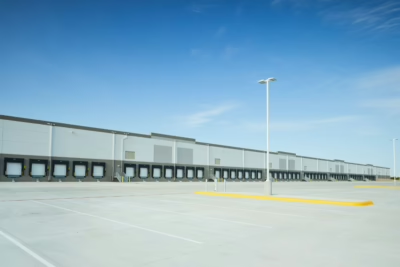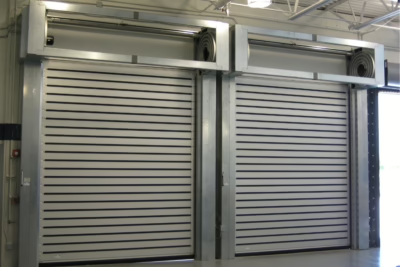Overhead doors play a crucial role in the daily operations of commercial and industrial facilities. Whether you’re operating a distribution center, warehouse, automotive shop, or manufacturing plant, the right door can improve efficiency, ensure safety, and minimize long-term maintenance costs. But with so many types, materials, and features available, how do you choose the right one for your operation?
This guide will walk you through the key factors to consider when selecting an overhead door, along with real-world scenarios and expert tips to help you make an informed decision.
Why the Right Overhead Door Matters
Choosing the wrong type of overhead door can lead to:
- Costly repairs or premature replacements
- Inefficiencies in daily operations
- Safety or compliance issues
- Poor environmental control (especially in temperature-sensitive spaces)
A well-chosen door should match your facility’s specific needs in terms of traffic, space, insulation, security, and usage frequency.
1. Understand Your Facility’s Requirements
Start with a full evaluation of your facility’s needs. Consider:
- Application: Is the door for a loading dock, vehicle bay, or warehouse partition?
- Traffic Volume: Will it open dozens or hundreds of times per day?
- Environmental Conditions: Do you need to protect against weather, temperature swings, or contaminants?
- Space Constraints: Do you have room for a sectional roll-up, or do you need a high-lift or vertical-lift solution?
Pro Tip: Don’t choose based solely on what’s currently installed. Facility needs evolve – your door should too.
2. Evaluate Door Types
Each type of commercial overhead door is designed with specific use cases in mind.
Sectional Overhead Doors
- Made of steel or aluminum panels that open upward in sections
- Excellent insulation and durability
- Ideal for warehousing and logistics operations
Rolling Steel Doors
- Coils up above the door opening to save space
- Offers high security and long-lasting performance
- Often used in industrial, retail, and transit facilities
High-Speed Doors
- Engineered for rapid cycling
- Improves workflow and climate control
- Best for food storage, pharmaceuticals, and clean rooms
Fire-Rated Doors
- Automatically closes during a fire
- Meets strict safety codes for compartmentalizing buildings
- Common in manufacturing and storage environments
3. Consider Material Options
Overhead doors come in a range of materials. Each offers unique strengths and trade-offs.
Steel
- Most common for commercial doors
- Offers strength, durability, and security
- Offers strength, durability, and security
Aluminum
- Lightweight and corrosion-resistant
- Popular for car dealerships and storefronts
- Can include glass panels for visibility
Fiberglass or PVC
- Resistant to chemicals and moisture
- Best for washdown or clean room environments
Insulated Panels
- Typically made of steel with foam cores
- Helps with temperature control and energy efficiency
- Recommended for climate-control facilities
4. Match the Door to the Frequency of Use
Facilities with high daily traffic need a door that can withstand constant use without breaking down.
For high-cycle environments:
- Choose high-speed or springless options with advanced motors
- Look for 1,000,000+ cycle life ratings
For low-cycle environments:
- Standard sectional or rolling doors may suffice
- Focus on insulation and security over speed
5. Prioritize Safety Features
Safety is non-negotiable. Look for features that protect personnel and equipment, especially in busy industrial settings.
Must-have safety options:
- Photo-eye sensors: Stops the door if a person or object is in the way
- Breakaway bottom bars: Minimizes damage on impact
- Manual release systems: For power outages
- Advanced control panels: With diagnostics and lockout/tagout capabilities
6. Factor in Insulation and Energy Efficiency
Energy efficiency isn’t just for homes. If your overhead door opens into a climate-sensitive area, proper insulation is critical.
Look for:
- R-value of 10+ for temperature control
- Thermal breaks and weather seals
- Wind resistance ratings for hurricane-prone areas
Bonus: Insulated doors can reduce noise in busy facilities.
7. Think About Aesthetics and Branding
For facilities that interact with customers – such as dealerships, service centers, or storefronts – appearance matters.
- Aluminum and glass panel doors can modernize the look
- Powder-coated or color-matched finishes help maintain your brand image
- Custom windows can provide light without compromising security
8. Plan for Maintenance and Lifecycle Costs
Some doors are less expensive up front but cost more to maintain over time. Others may have a higher initial investment but offer long-term value.
Questions to ask:
- Are parts easily available?
- How often will it need service?
- What’s the expected lifecycle of the motor and springs?
Consider a preventive maintenance plan to extend your door’s lifespan and reduce unexpected costs.
Real-World Example: Boosting Productivity with the Right Door
A packaging plant in Memphis was using outdated sectional doors that opened slowly and lacked insulation. Employees complained about cold drafts, and trailers were backed up during shift changes.
After upgrading to high-speed insulated roll-up doors with integrated LED warning lights, the plant saw:
- A 17% increase in loading bay throughput
- Improved temperature stability in the work zone
- Fewer safety incidents due to enhanced visibility
The payback period for the upgrade was just under 18 months.
Final Thoughts
Choosing the right overhead door for your facility involves more than checking a few boxes – it requires understanding your operations, environment, and future growth. Whether you’re after speed, security, efficiency, or aesthetics, the right door will support your workflow and reduce long-term operating costs.
At DuraServ, we help commercial and industrial clients find the right overhead door systems for their needs – from insulated sectional doors to high-performance roll-ups and everything in between.



